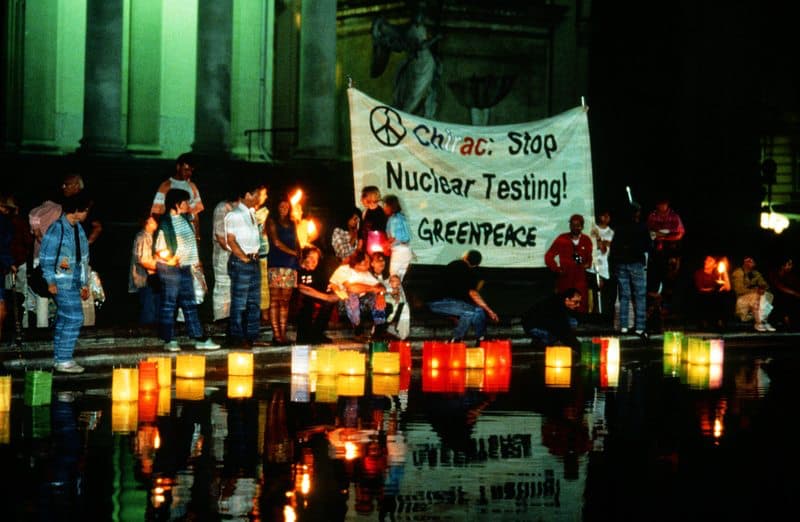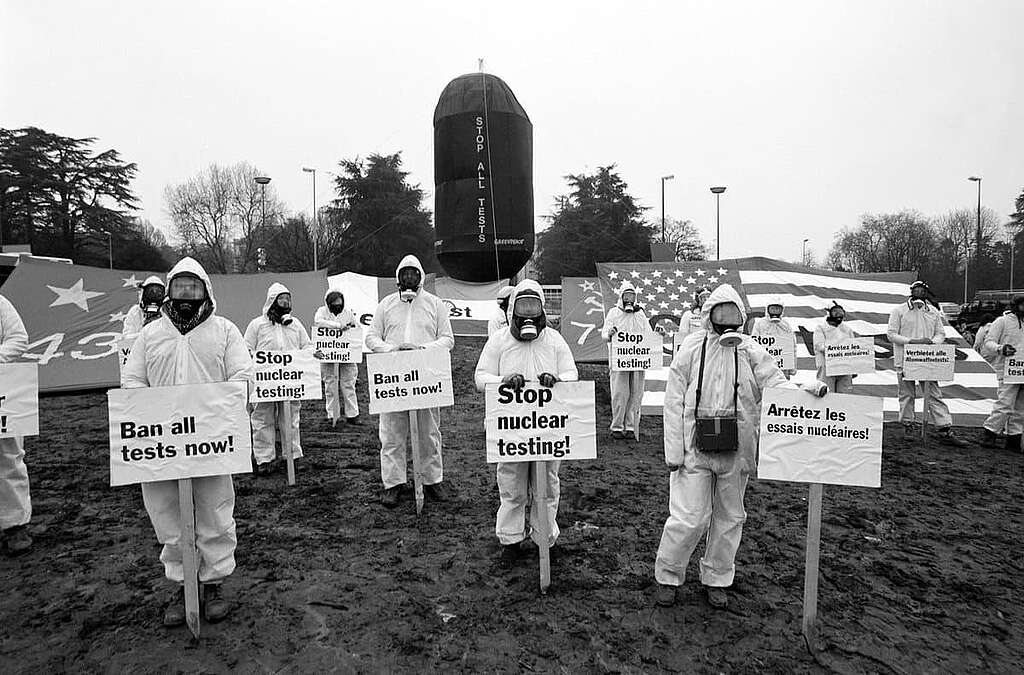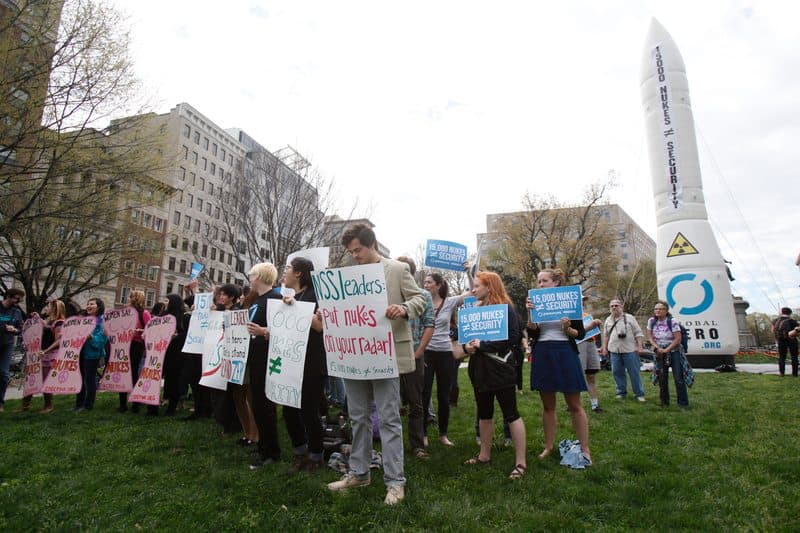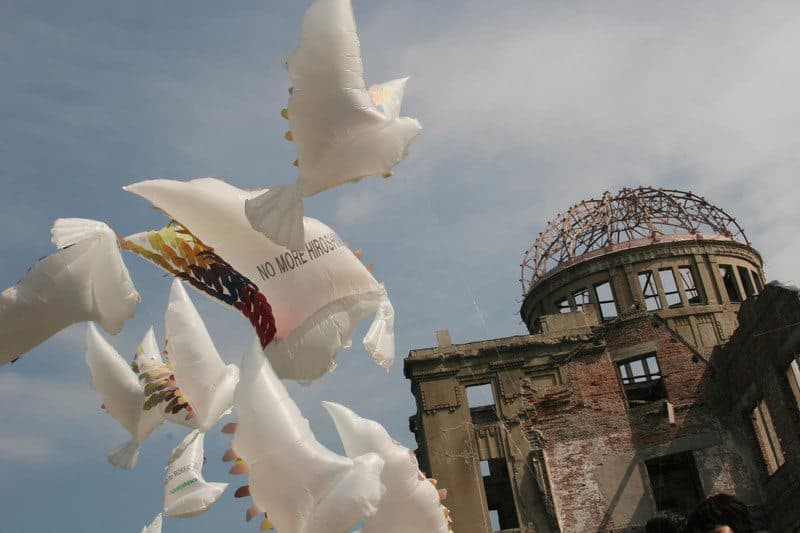Even with the passing of the UN’s Nuclear Weapons Ban Treaty, Japan still remains an outlier, betraying the hopes of atomic bomb survivors from Hiroshima and Nagasaki.
Even with the passing of the UN’s Nuclear Weapons Ban Treaty, Japan still remains an outlier, betraying the hopes of atomic bomb survivors from Hiroshima and Nagasaki.
It started with just 12 of them. With a bold mission, this group of activists set sail to Amchitka island off Alaska to protest the detonation of an underground US nuclear test. It was September 1971, and though the mission was initially unsuccessful, it was the beginning of what became Greenpeace, and just one of the many issues – the elimination of nuclear weapons – that the environmental organisation would campaign endlessly against.

Fast forward to 2017, and what was once a hard-fought battle and one of Greenpeace’s legacy issues, has now become a successful defeat. On 7 July, the United Nations adopted the “Nuclear Weapons Treaty” with an overwhelming majority – an epoch-making agreement that prohibits not only the development, experiment, manufacture, possession, and use of nuclear weapons, but also the “threat to use”. Nuclear and chemical weapons, and anti-personnel landmines and cluster bombs were also banned. The Treaty will be open for signature by states on September 20th.
To our disappointment, however, Japan did not join the 122 countries, or two-thirds of the United Nations member countries, that stood up to stop nuclear weapons. The peculiar absence of Japan, whose preamble explicitly recognizes “unacceptable suffering of and harm caused to the victims of the use of nuclear weapons (Hibakusha) as well as those affected by the testing of nuclear weapons” begs explanation.

The Government of Japan expressed a concern that the Treaty that was negotiated only among non-nuclear weapon states could create “a more decisive divide” between the states with and without nuclear weapons. From a standpoint of realpolitik of the Cold War era, Japan is under an American nuclear umbrella, and as such, would violate a Treaty prohibiting the “threat to use” if it were to be a signatory. Therefore Japan sides with the nuclear weapons states (the US, Russia, China, France, UK, India, Pakistan, Israel, North Korea) and the North Atlantic Treaty Organization (NATO) countries that rely on the US nuclear umbrella.
The adoption of this historic Treaty by an overwhelming majority of the UN membership, nonetheless, represents a hard-won victory for people such as the Hibakusha (Japanese word for the surviving victims of the 1945 atomic bombings of Hiroshima and Nagasaki), victims of American nuclear tests and their descendents, and grassroots activists who worked tirelessly against the European nuclear deployment and uranium mining in Australia. The Treaty is a long lasting legacy of their testimonies, protests and actions of the past decades, and keeps a hope alive for realization of the nuclear free world.

Setsuko Thurlow, a Hiroshima atomic bomb victim who now lives in Canada, told delegates of the Treaty negotiations:
“I want you to feel the presence of not only the future generations, who will benefit from your negotiations to ban nuclear weapons, but to feel a cloud of witnesses from Hiroshima and Nagasaki.”
“We have no doubt that this treaty can – and will – change the world.”

Greenpeace renews their calls for peace and make this anniversary a message to world leaders to make real their commitments to nuclear disarmament, including the Japanese government to abandon plans to produce nuclear weapons.
On the 72nd anniversary of the Hiroshima and Nagasaki bombings, we stand in solidarity with the survivors and those across the world who have campaigned against nuclear weaponry and call for Japan to join the Treaty. The elimination of nuclear weapons has been the cause that Greenpeace campaigned so passionately heavily for since 1971. As the only country in the world hit by a nuclear attack, Japan’s commitment to the Treaty would not only be a long-fought win for the country’s tainted history, but also an important step towards a future world that is ultimately safe and nuclear free.
Yuko Yoneda is the Executive Director at Greenpeace Japan

